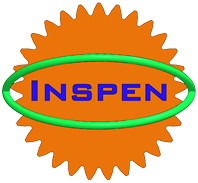Comprehensive Guide to Pressure Regulating Valves
Introduction to Pressure Regulating Valves
Pressure regulating valves are critical components in various industrial and residential systems. These devices are designed to maintain consistent downstream pressure regardless of fluctuations in upstream pressure or flow rates. By ensuring a steady and controlled flow, they play a vital role in enhancing system efficiency, reducing wear on equipment, and preventing accidents due to over-pressurisation.
What is a Pressure Regulating Valve?
A pressure regulating valve (PRV) is a mechanical device used to regulate and stabilise pressure levels within a system. It automatically adjusts to changes in system pressure to maintain a pre-set, desired pressure level. PRVs are found in applications ranging from water distribution and gas systems to hydraulic circuits and steam operations.
Key Components of Pressure Regulating Valves
-
- Body: The primary structure housing all components.
-
- Spring and Diaphragm Assembly: Responsible for sensing pressure changes and initiating adjustments.
-
- Valve Seat and Disk: Directly control the flow to maintain the set pressure.
-
- Adjustment Screw: Used to set or modify the desired pressure level.
Types of Pressure Regulating Valves
1. Direct-Acting Pressure Regulating Valves
These are simple and compact valves designed for low-flow applications. The valve’s internal spring directly balances against the downstream pressure. They are ideal for applications requiring minimal adjustments.
2. Pilot-Operated Pressure Regulating Valves
These are more sophisticated and suited for high-flow systems. They consist of a pilot valve that controls the main valve, ensuring precise pressure regulation. Industries with demanding pressure requirements often prefer these valves.
3. Pressure-Reducing Valves
These valves reduce high upstream pressure to a lower, steady downstream pressure. They are widely used in water supply systems to protect downstream plumbing.
4. Pressure Relief Valves
Designed to release excess pressure from a system, these valves prevent damage caused by over-pressurisation.
Applications of Pressure Regulating Valves
1. Water Distribution Systems
Pressure regulating valves ensure a consistent flow of water in municipal and residential water systems, preventing pipe bursts and reducing water wastage.
2. Industrial Manufacturing
In industries, PRVs are used in steam, gas, and liquid pipelines to protect sensitive equipment and maintain optimal working conditions.
3. HVAC Systems
Heating, ventilation, and air conditioning systems rely on pressure regulating valves to ensure energy-efficient operations and comfort.
4. Oil and Gas Industry
PRVs are essential in controlling pressure in pipelines and processing units, enhancing safety and operational efficiency.
Benefits of Using Pressure Regulating Valves
-
- Enhanced System Efficiency
PRVs prevent pressure fluctuations, ensuring smooth and consistent operations.
- Enhanced System Efficiency
-
- Extended Equipment Life
By maintaining optimal pressure, these valves reduce wear and tear on system components.
- Extended Equipment Life
-
- Improved Safety
They prevent over-pressurisation, mitigating risks of equipment failure and accidents.
- Improved Safety
-
- Cost Savings
Energy-efficient operations and reduced maintenance costs make PRVs a cost-effective choice.
- Cost Savings
How to Choose the Right Pressure Regulating Valve
1. Understand Your System Requirements
Identify the pressure range, flow rate, and media type (water, gas, steam) your system handles.
2. Material Compatibility
Select a valve made from materials that are resistant to the media in your system. For instance, stainless steel is ideal for corrosive environments.
3. Size and Configuration
Choose the correct valve size to match your system’s pipe diameter and flow requirements.
4. Maintenance Needs
Consider ease of maintenance and availability of spare parts when selecting a valve.
Installation and Maintenance Tips
Proper Installation
-
- Install the valve in the correct orientation as indicated by the manufacturer.
-
- Ensure clean pipelines to avoid contamination affecting valve performance.
-
- Use proper sealing techniques to prevent leaks.
Routine Maintenance
-
- Regularly inspect the valve for wear and tear.
-
- Clean or replace the diaphragm and springs periodically.
-
- Check for leaks or unusual noise during operation.
Common Issues and Troubleshooting
1. Pressure Fluctuations
Inspect for worn-out springs or a clogged valve seat, and replace them as necessary.
2. Valve Leakage
Check the sealing elements and tighten connections to prevent leaks.
3. Noisy Operation
Excessive noise can result from cavitation or high velocity; installing flow restrictors can help mitigate this.
Future Innovations in Pressure Regulating Valves
With advancements in technology, smart PRVs equipped with IoT sensors are emerging. These valves offer real-time monitoring, predictive maintenance, and enhanced precision, revolutionising how pressure systems are managed.
Conclusion
Pressure regulating valves are indispensable in ensuring the safe and efficient operation of various systems. Whether in water supply, industrial processes, or HVAC systems, these devices play a pivotal role in maintaining pressure stability. By choosing the right valve, ensuring proper installation, and adhering to routine maintenance, you can significantly enhance the performance and longevity of your system.
1. Direct-Acting Pressure Regulating Valve
Direct-acting valves are compact and simple, operating without external controls. They are commonly used for low-flow and residential applications where minimal adjustments are needed.
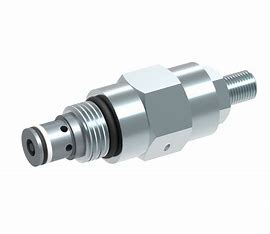
Direct-acting pressure regulating valve with a compact design.
2. Pilot-Operated Pressure Regulating Valve
These valves consist of a main valve controlled by a pilot valve, making them ideal for high-flow industrial systems requiring precise pressure regulation.
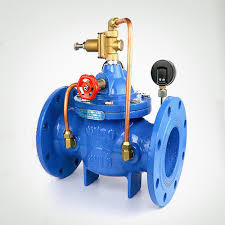
Pilot-operated valve for high-demand systems.
3. Pressure-Reducing Valve
Designed to lower high upstream pressure to a steady downstream level, these valves are extensively used in water distribution and plumbing systems.
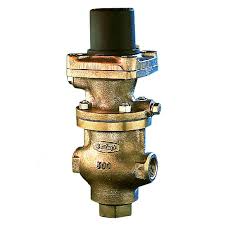
Pressure-reducing valve for residential and commercial pipelines.
4. Pressure Relief Valve
These valves release excess pressure to protect systems from over-pressurisation, commonly found in steam, gas, and hydraulic systems.
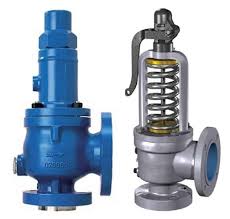
Pressure relief valve ensuring system safety.
5. Back-Pressure Regulating Valve
Back-pressure valves maintain a constant upstream pressure by regulating the release of excess pressure downstream. These are commonly used in chemical and process industries.
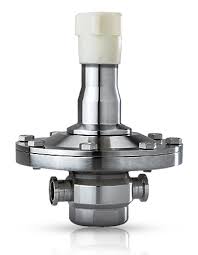
Back-pressure valve for chemical process control.
6. Hydraulic Pressure Regulating Valve
These valves are integral to hydraulic systems, ensuring safe and efficient operation by maintaining a consistent pressure range.
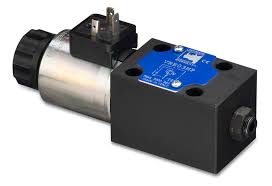
Hydraulic pressure regulating valve for industrial machinery.
7. Gas Pressure Regulating Valve
Used in gas distribution systems, these valves ensure consistent delivery pressure for appliances and industrial systems.
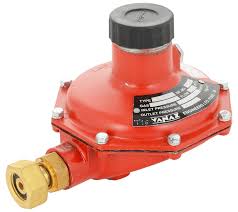
Gas pressure regulating valve for industrial and residential applications.
8. Steam Pressure Regulating Valve
Steam PRVs are engineered to regulate steam pressure in heating systems, industrial processes, and power plants.
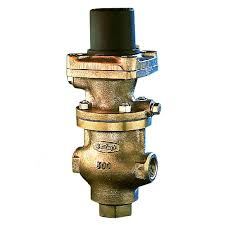
Steam pressure regulating valve for thermal applications.
9. Pressure-Sustaining Valve
These valves maintain minimum pressure in a system by diverting flow to other parts of the system or a secondary outlet.

Pressure-sustaining valve for water and industrial systems.
How to Fix a Pressure Regulating Valve Leaking
A leaking pressure-regulating valve can disrupt your plumbing system. Identifying and resolving the issue quickly is essential to prevent further damage. This guide walks you through the common causes and solutions.
What Causes a Pressure Regulating Valve to Leak?
Worn-Out Seals
Over time, the seals inside the valve deteriorate. Age and frequent use are common culprits.
High Water Pressure
Excessive water pressure can strain the valve, causing leaks in weak spots.
Debris Build-Up
Sediments and particles in water can clog the valve, leading to malfunction and leaks.
Signs of a Leaking Pressure Regulating Valve
-
Water Dripping from the Valve
Visible drips or wet areas around the valve are common indicators. -
Unstable Water Pressure
Fluctuating water pressure could signal valve damage. -
Unusual Noises
Whistling or hissing sounds often accompany valve leaks.
How to Fix a Leaking Pressure Regulating Valve leaking ?
1. Turn Off the Water Supply
Before starting, shut off the water supply to prevent further leakage.
2. Inspect the Valve
Check for visible cracks, worn seals, or clogged components.
3. Clean the Valve
Flush out debris using clean water or an appropriate cleaning solution.
4. Replace Damaged Parts
If seals or internal parts are damaged, replace them with compatible components.
5. Test the Valve
After reassembling, turn the water back on and test for leaks.
When to Call a Professional to prevent pressure regulating valve leaking
If DIY fixes don’t work or the damage seems severe, consult a plumber. Delaying professional help can worsen the problem and increase repair costs.
How to Prevent Pressure Regulating Valve Leaking
-
Regular Maintenance
Inspect and clean the valve periodically. -
Monitor Water Pressure
Use a pressure gauge to ensure your system operates within safe limits. -
Install a Sediment Filter
Filters can reduce debris entering the valve, prolonging its lifespan.
By addressing leaks promptly, you can ensure your plumbing system functions efficiently and avoid costly repairs. Follow these tips for a hassle-free experience!
